Space
What is Radio Astronomy?
Published
4 weeks agoon


What is radio astronomy and what objects are used in the study? What are the most famous radio telescopes in the world?
What is Radio Astronomy?
Astronomy is one of the oldest sciences in the world. Since long ago, humans have tried to discover the various mysteries of the sky above their heads. Today, with the progress of science and technology, astronomy has become one of the most accurate and advanced sciences in the world. In astronomy, astronomers and astronomers study different structures and objects in the universe at different wavelengths. In other words, it can be said that today’s astronomy is classified into different branches, one of which is radio astronomy.
In this article, we are going to examine radio astronomy in detail. First, we will get acquainted with concepts such as wavelength and electromagnetic radiation. Finally, we find out what radio astronomy is and what objects it is most useful in studying.
A brief look at the basic concepts
For a better understanding of radio astronomy, it is better to get acquainted with the basic concepts needed first. These concepts help us to know better and more precisely how radio astronomers study different objects in the universe with the help of this science.
Wavelength
The environment around us is full of different waves. For example, when we use the TV remote control to turn it on/off or adjust the volume and change the channel, we are actually sending waves. Radios, microwaves, mobile devices, and thousands of other devices in today’s world also emit waves at different wavelengths. But what is the wavelength?


In physics, the distance between two peaks of a wave or the distance between two troughs of a wave is called ” wavelength “. The shorter this distance, the shorter the wavelength.
Energy
To understand the relationship between wavelength and energy, imagine a point on the waves in the image above. Suppose these waves are propagating in the same direction at the same speed, that is, both waves above are propagating from left to right at the same speed. Which wave has the highest number of crests in one second (for example) passing your desired point?
Obviously, more crests of a wave with a shorter wavelength will pass through your target point. So in other words, this wave has more energy. It can be said that the more compact the wave – the shorter its wavelength – the more energy it has. Therefore, wavelength and energy have an inverse relationship with each other.
Electromagnetic radiation
Now that we are familiar with the concepts of wavelength and energy, we can take a look at electromagnetic radiation. The discovery of electromagnetic radiation has a long history to which many physicists and scientists have contributed.
In short, scientists discovered in the 19th century that light actually consists of packets of energy called ” photons ” that can behave both like waves and particles.
Electromagnetic radiation is actually the wave-like behavior of light (imagine the waves emitted by dropping a stone into still water in a pond). Electromagnetic radiation covers a wide range of energy (or in other words, wavelength). We leave the investigation of the particle-like behavior of light to another article.
It is interesting to know that celestial objects such as stars radiate in all wavelengths of the electromagnetic spectrum. According to the wavelength, electromagnetic radiation is divided into different categories as you can see below.


As you can see, gamma radiation is the most energetic part of the electromagnetic spectrum. In fact, gamma radiation is the dangerous radiation of the nuclei of heavy atoms such as uranium and radioactive materials. The energy of this radiation is so high that it can lead to disasters like Hiroshima.
After that, we see X-rays, which have lower energy and longer wavelengths than gamma rays. X-ray radiation is the same radiation used in radiology and photography in medicine.
Moving towards radiations with lower energy (and longer wavelengths) we reach the visible light range. Visible light is actually a part of the electromagnetic spectrum with a wavelength of 350 to 750 nm that the human eye can see.
In other words, our eyes are designed to see the world in visible light. Shorter or longer wavelengths are not visible to the human eye. For example, our eyes cannot see the infrared radiation of an object.
Finally, at the longest wavelengths, we reach radio radiation, which has the lowest energy. Radio waves have wavelengths ranging from a few centimeters to a few hundred meters. When you are tuning your radio to listen to your favorite radio station, you are actually tuning the wavelength of the radio waves that reach the radio receiver.
Satellites, television, and marine navigators are other tools that use radio waves to send information.
radio astronomy
Now that we are familiar with electromagnetic radiation and radio waves, we can better understand the concept of radio astronomy. As we said, heavenly bodies like stars radiate in the entire electromagnetic spectrum.
In short, the study of the radiation of celestial bodies in the radio range is called “radio astronomy”. High-energy celestial objects, as well as cold and dark objects with low energy, can radiate in the radio range of the electromagnetic spectrum.
Radio astronomers study the emission of gas giant planets, explosions in the depths of galaxies, or even the signals of a dying star, as well as quasars in this branch of astronomy.


Each of the mentioned objects or phenomena has unique patterns of radio emission that help astronomers to obtain valuable information. Today, radio astronomy is one of the main branches of astronomy and reveals hidden features of our universe full of wonders.
Related Article: What is the farthest thing we can see in the sky?
It was the first time in 1933 that ” Karl Jansky ” managed to record radio radiation from the Milky Way in the Bell Telephone Laboratory. In fact, this was the first detection of radio waves from an astronomical object. It is interesting to know that before that, in the 1860s, scientists had succeeded in predicting the existence of such waves using ” James Clerk Maxwell’s ” equations, but the limitations of the instruments did not allow them to practically record these waves from celestial bodies until 1933. deliver
After that, with the advancement of technology, scientists managed to build a tool to study the radio radiation of astronomical objects in a special way.
Cosmic microwave background radiation, known as evidence of the Big Bang at the beginning of the universe, was discovered through radio astronomy.
Radio telescopes and radio astronomy
Astronomers around the world use radio telescopes to observe naturally occurring radio waves coming from stars, planets, galaxies, dust clouds, and gas molecules.
Astronomers use different methods and tools to study waves in the radio range. One of these famous tools is a large antenna that looks like a satellite dish and is called a “radio telescope”.
While some radio telescopes have only one large dish, some are giant arrays of many dishes stacked together. These sets of telescopes use radio interferometry techniques.
This array helps astronomers obtain radio data and precise images of distant objects in this wavelength range.


The radio signals collected by these telescopes are converted into data that can be used to create images. In fact, the data is colored by various techniques and converted into color images to display different properties of the object such as temperature.
Limitations of radio astronomy
Radio astronomers use various techniques to observe objects in the radio spectrum. Instruments may simply target a celestial body as an energetic radio source and analyze the data collected from it.
However, keep in mind that observations from the Earth’s surface are limited to wavelengths that can pass through the Earth’s atmosphere. At long wavelengths, the ionospheric layer of the Earth’s atmosphere becomes troublesome.
When we reach radio waves with very long wavelengths, the water vapor in the ionosphere interferes with the radio waves. For this reason, astronomers are building radio observatories that study shorter wavelengths of radio waves. These observatories, which operate at millimeter wavelengths, are built in dry, high-altitude areas to minimize the amount of water vapor in the line of sight.
On the other hand, the sources of radio waves on earth that are used for daily life can also cause interference in radio waves. For this reason, many radio observatories are built in places far away from human habitation.
The most famous radio telescopes in the world
As we said, radio telescopes in the world are either installed individually – single dishes with very large dimensions – or as arrays of several radio telescopes, to increase the amount of input data. In the following article, we will get to know some of the largest radio telescopes in the world and the largest radio telescope arrays.
Single radio telescope
The largest single radio telescope in the world is called the “Five-hundred-meter Aperture Spherical Telescope”, which is called ” FAST ” for short. This telescope, which is located in a natural valley in Guizhou province in China, was completed in 2016 and due to its very large size, it can observe objects at very far distances.
The spherical reflector of this radio super telescope has a diameter of 305 meters, and was built in collaboration with Cornell University in the United States.


” RATAN-600 ” is the name of another radio telescope that is very famous. This Russian radio telescope has a reflecting plate with a diameter of 895 meters and is located near the Caucasus Mountains. Researchers from Australia, France, India, Italy, Russia, and Ukraine have worked together to build such a huge and powerful telescope.


Additionally, the record for the largest fully automatic radio telescope goes to GBT, which stands for Robert C. Byrd Green Bank. This huge telescope is located in West Virginia and has been in operation since 2000. The GBT, which operates at short wavelengths of a few millimeters, weighs about 7.3 million kilograms!


Radio telescope array
The largest and most famous array of radio telescopes in the world is called a “Very Large Array”, abbreviated as ” VLA “.
According to experts, this array is a combination of high sensitivity, clarity, and versatility. VLA consists of 27 dishes with a diameter of 25 meters each. This special and powerful complex is located in the center of New Mexico in the United States and allows more than 1,500 astronomers and astronomers to carry out their research every year. These telescopes are used to study the solar system, the Milky Way galaxy, stars, pulsars, atomic and molecular gases of the Milky Way, and other galaxies.


Among the other radio telescope arrays in the world, we can mention the “Westerbork” made in the Netherlands, which consists of 14 dishes each with a diameter of 25 meters.
On the other hand, Indian astronomers have also built the giant radio telescope ” GMRT ” near an area called “Puna” in India, which collects data from the universe at wavelengths of 20 cm to 6 meters.
Frequently asked questions of users


You may like
-




The highest observatory in the world officially started its work
-




What is an exoplanet? Everything you need to know
-

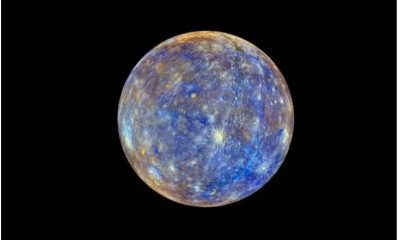


Seven surprising discoveries about the planet Mercury
-

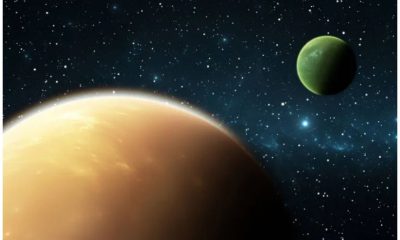


Why there is no gaseous moon in solar system?
-




The strangest things that can happen to humans in space
-




Artificial intelligence could explain why we haven’t seen extraterrestrials yet
Space
The highest observatory in the world officially started its work
Published
7 hours agoon
01/05/2024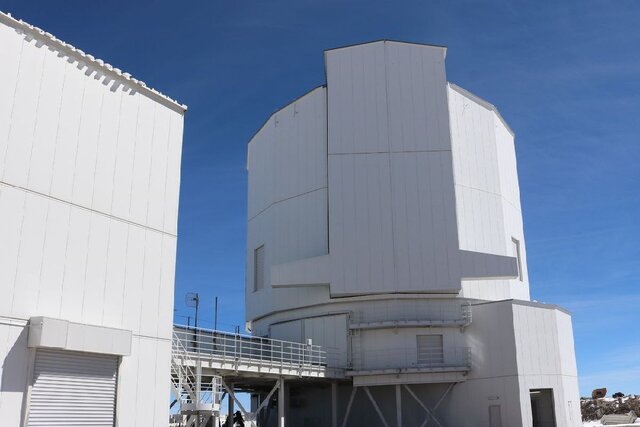

The Tokyo Atacama University Observatory, which has the title of the highest observatory in the world, is now ready for work.
The highest observatory in the world officially started its work
A new telescope, which is introduced as the highest observatory in the world, has been officially opened.
Tokyo Atacama University Observatory (TAO), which was first designed 26 years ago to study the evolution of galaxies and exoplanets, is located on top of a high mountain in the Chilean Andes at an altitude of 5,640 meters above sea level. . The height of this telescope even exceeds the “Atacama Large Millimeter Array” (ALMA), which is located at an altitude of 5050 meters.
The TAO observatory is located in a region where the high altitude, sparse atmosphere, and perpetually dry weather are deadly for humans, but it is an excellent spot for infrared telescopes like TAO because their observational accuracy relies on low humidity levels that keep the Earth’s atmosphere at wavelengths. Infrared makes it transparent.
Yuzuru Yoshii, a professor at the University of Tokyo (UTokyo), said: “Building a telescope on the top of the mountain was an incredible challenge, not only from a technical point of view but also from a political point of view.” I communicated with the indigenous people to ensure their rights and views were taken into account, with the Chilean government to obtain permits, with local universities for technical cooperation, and even with the Chilean Ministry of Health to ensure that people could climb safely at that altitude. to work
He added: The research that I have always dreamed of doing, thanks to everyone involved, will soon become a reality and I could not be happier.
The 6.5-meter TAO telescope has two science instruments designed to observe the world in infrared light. One such instrument, called SWIMS, will image galaxies in the early universe to understand how they formed from the merger of dust and pristine gas. Despite decades of research, the details of this process remain obscure. The second device, MIMIZUKU, will contribute to the mission’s overall goal by studying the primordial dust disks from which stars and galaxies formed.
Riko Senoo, a student at the University of Tokyo and a researcher on the TAO project, said: “The better astronomical observations of the real object, the more accurately we can reproduce what we see with our experiments on Earth.”
Masahiro Konishi, a researcher at the University of Tokyo, said: “I hope that the next generation of astronomers will use TAO and other ground-based and space-based telescopes to make unexpected discoveries that challenge our current understanding and provide the unexplained.”
Read more: Why there is no gaseous moon in solar system?
Before the newly opened telescope was built, Yoshi and his colleagues in 2009 also assembled a 1-meter telescope on top of Mt. This small telescope called “miniTAO” imaged the center of the Milky Way galaxy. Two years later, miniTAO received the Guinness World Record for being the highest astronomical observatory on Earth.
Although the observatory has been the talk of the town for the past 26 years, work on its construction site began in 2006. At that time, the first road to reach the summit was paved, and shortly after, a weather monitoring system was installed there.


What is an exoplanet? Everything you need to know
For years, extrasolar planets have occupied the minds of scientists and dreamers. Since the discovery of the first stars in the night sky, man has been searching for the worlds that revolve around these stars. Are exoplanets rocky bodies similar to Earth? Can they have liquid water flow on their surface? Does the existence of essential elements for life in other worlds mean that we are not alone in this infinite world?
For thousands of years, humans have been trying to answer this question: Are we alone? Until the 1990s, astronomers had no evidence of exoplanets; But finally, in 1992, the first exoplanet was discovered. Since then, more than 5,000 exoplanets have been discovered in different types and categories and have amazed scientists more than ever
-
What is an exoplanet?
-
Types of extrasolar planets
-
Stone worlds
-
Gas giants
-
Introduction of extrasolar planets
-
TOI-1452b, a blue world candidate
-
WASP-39b, the first planet with a carbon dioxide atmosphere
-
WASP 103b, the rugby ball planet
-
51 Pegasi b; The first planet around a Sun-like star
-
PSR B1620-26b; The oldest known planet
-
Gliese 876d; rocky planet
-
Kepler-11f; gas dwarf
-
Kepler-452b; Earth-like planet
-
Search for life in extrasolar planets
-
Interesting facts about exoplanets
-
Detecting the color of an exoplanet for the first time in 2013
-
There are 10 billion Earth-like planets in the Milky Way
-
NASA’s Kepler space telescope has discovered the most exoplanets
-
The possibility of exoplanets around stars with high metallicity
-
Using the gravitational microlensing method to observe exoplanets
-
Most exoplanets were discovered through radial velocity
-
The transit method is the easiest way to find exoplanets
-
Exoplanets can orbit more than one star
-
Exoplanets can have harsh climates
-
Some exoplanets have strange orbits
-
Exoplanets can have unique atmospheres
-
Conclusion
What is an exoplanet?
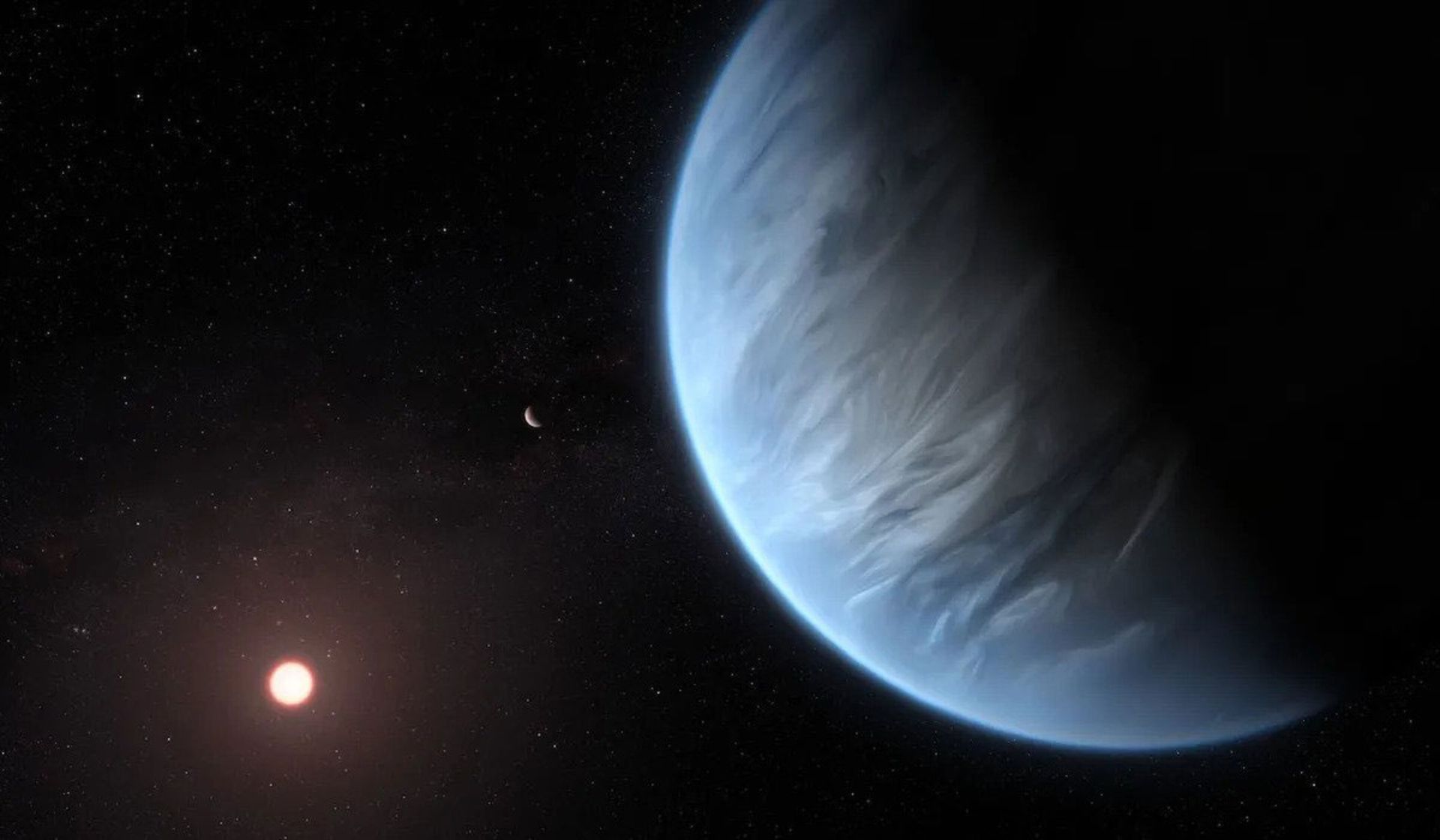 Illustration of the exoplanet k12-18b, which is a super-Earth.
Illustration of the exoplanet k12-18b, which is a super-Earth.
An exoplanet is a world outside the solar system in a different star system. Over the past two decades, thousands of exoplanets have been discovered, and most of these discoveries belong to NASA’s Kepler Space Telescope.
Exoplanets have different sizes and orbits. Some of them are giant worlds near the host star and others are icy and rocky worlds. NASA and other space agencies are always on the lookout for a specific type of exoplanet: an Earth-like planet in the habitable belt of a Sun-like star.
The habitable zone is the region of a star’s orbit where the planet’s temperature allows surface liquid water to flow. The first definition of the life belt was based on the concept of heat balance, however, based on current calculations, it also includes other criteria such as the greenhouse effect of the planet’s atmosphere. For this reason, determining the boundaries of the life belt has become a little vague.
The Kepler Space Telescope, an observatory that started its operation in 2009 and continued to operate until 2018, has the honor of discovering the largest number of exoplanets. The telescope has definitively discovered 2,342 exoplanets and provided indications of the existence of another 2,245 planets.
Types of extrasolar planets
Our solar system is home to eight planets, divided into two groups: rocky planets and gas giants. The four inner planets of the solar system, namely Mercury, Venus, Earth, and Mars, are rocky. At the same time, the four outer planets of the solar system, namely Jupiter, Saturn, Uranus, and Neptune, are classified as gas giants. Most of the planets that were discovered in the orbit of other stars are either rocky or gas giants. However, gas and rock giants can be divided into groups and subgroups.
Stone worlds
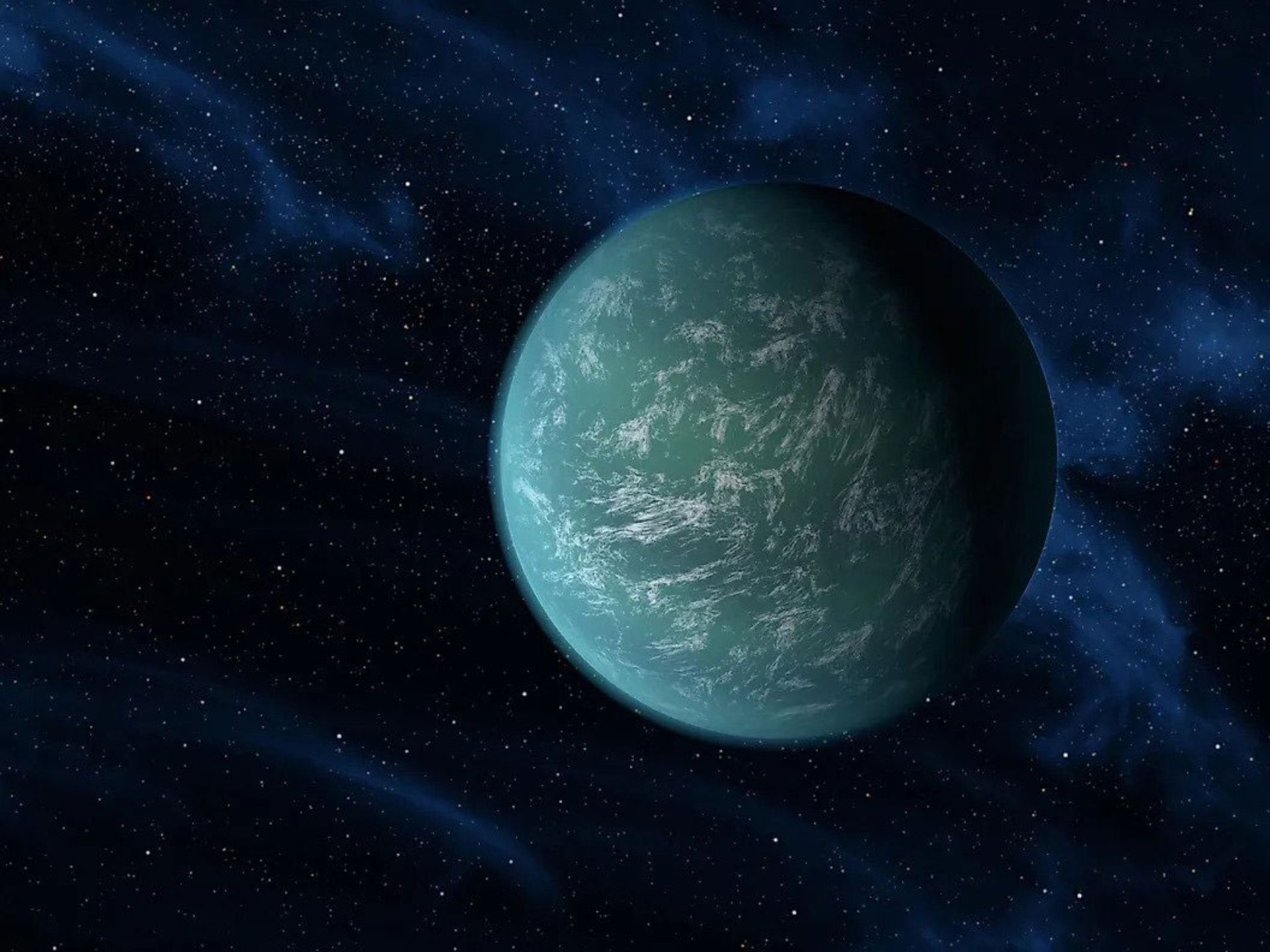
An artist’s rendering of Kepler 22b, a distant, possibly super-Earth planet
The rocky planets themselves are divided into two categories: small rocky planets and so-called super-Earth planets. Small rocky planets are the type of planets that are also found in the solar system. Although the rocky planets in the solar system differ from each other, they all fall into one category.
However, exoplanets do not exist in the solar system, yet they are one of the most common planets in the Milky Way. These planets, as their name suggests, are a kind of rocky planet larger than Earth. According to a more precise definition, the rocky exoplanets are at least twice the size of Earth.
The mass of super-Earths can reach up to ten times the mass of the Earth. Scientists still do not know at what point the planets lose their rocky surface and become gas planets. However, in the range of 3 to 10 times the mass of Earth, there may be super-Earths with different compositions, such as blue worlds, snowball worlds, or even planets like Neptune that are made of very dense gas. As a result, heavy super-Earths that have turned into gas giants can be classified as sub-Neptunian or mini-Neptunian planets.
Gas giants
 Artist’s rendering of hot Jupiter orbiting its star
Artist’s rendering of hot Jupiter orbiting its star
Gas giants are divided into three categories: gas giants, ice giants, and hot Jupiters. Simple gas giants are called worlds like Jupiter and Saturn. These heavy worlds are usually located in orbit far from their star, have dense atmospheres mostly composed of hydrogen and helium, and do not have a solid surface.
On the other hand, planets like Uranus and Neptune are called ice giants. Although the predominant composition of all gas giants is hydrogen and helium, ice giants are a type of gas giant with ice concentrations in their atmosphere. For example, both the planets Uranus and Neptune have large amounts of chemicals such as methane, ammonia, and water. Ice giants are usually located in the outer reaches of their star system; Where ice is found in high concentrations.
Gas giants and ice giants can be seen in the solar system. However, the third type, hot Jupiter, does not exist in our solar system. A hot Jupiter is a gas giant that is in a very close orbit from its parent star. This orbit can be even closer to the Sun than the orbit of Mercury; Therefore, hot Jupiter planets usually have hellish temperatures in their atmospheres, hence the nickname hot Jupiters.Introduction of extrasolar planets
Although exoplanets are classified in the group of rocky planets such as super-Earths or gas and ice giants and hot Jupiters, some planets violate the existing classifications and the number of these types of planets is increasing day by day. In this section, we introduce some of the most interesting exoplanets that have been discovered so far.
TOI-1452b, a blue world candidate
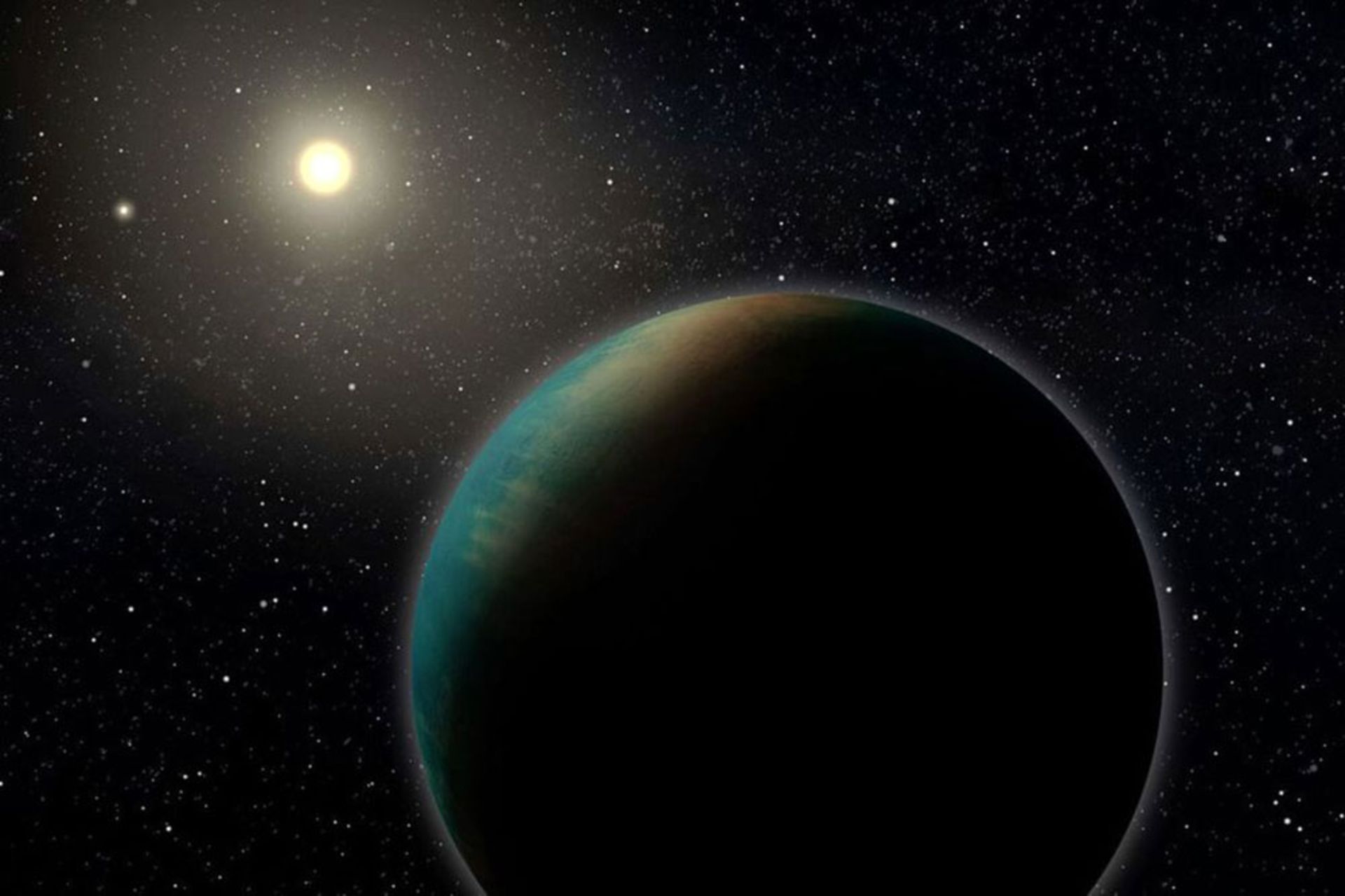 Illustration of TOI 1452b, a super-Earth planet.
Illustration of TOI 1452b, a super-Earth planet.
The planet TOI-1452b is located in the orbit of a red dwarf star at a distance of 100 light-years from Earth. Researchers discovered this planet through the blocking of starlight and its fluctuations.
Based on the obtained information, the planet TOI-1452b is almost 70% larger than the Earth and therefore it is included in the group of super-Earth planets. The planet also orbits its star once every 11 days. The density of this planet indicates that it has a liquid ocean surface as well as rocky and metallic compositions like planet Earth. Surprisingly, water makes up 30% of TOI-1452b’s mass. While water on earth is only 1% of its mass.
WASP-39b, the first planet with a carbon dioxide atmosphere
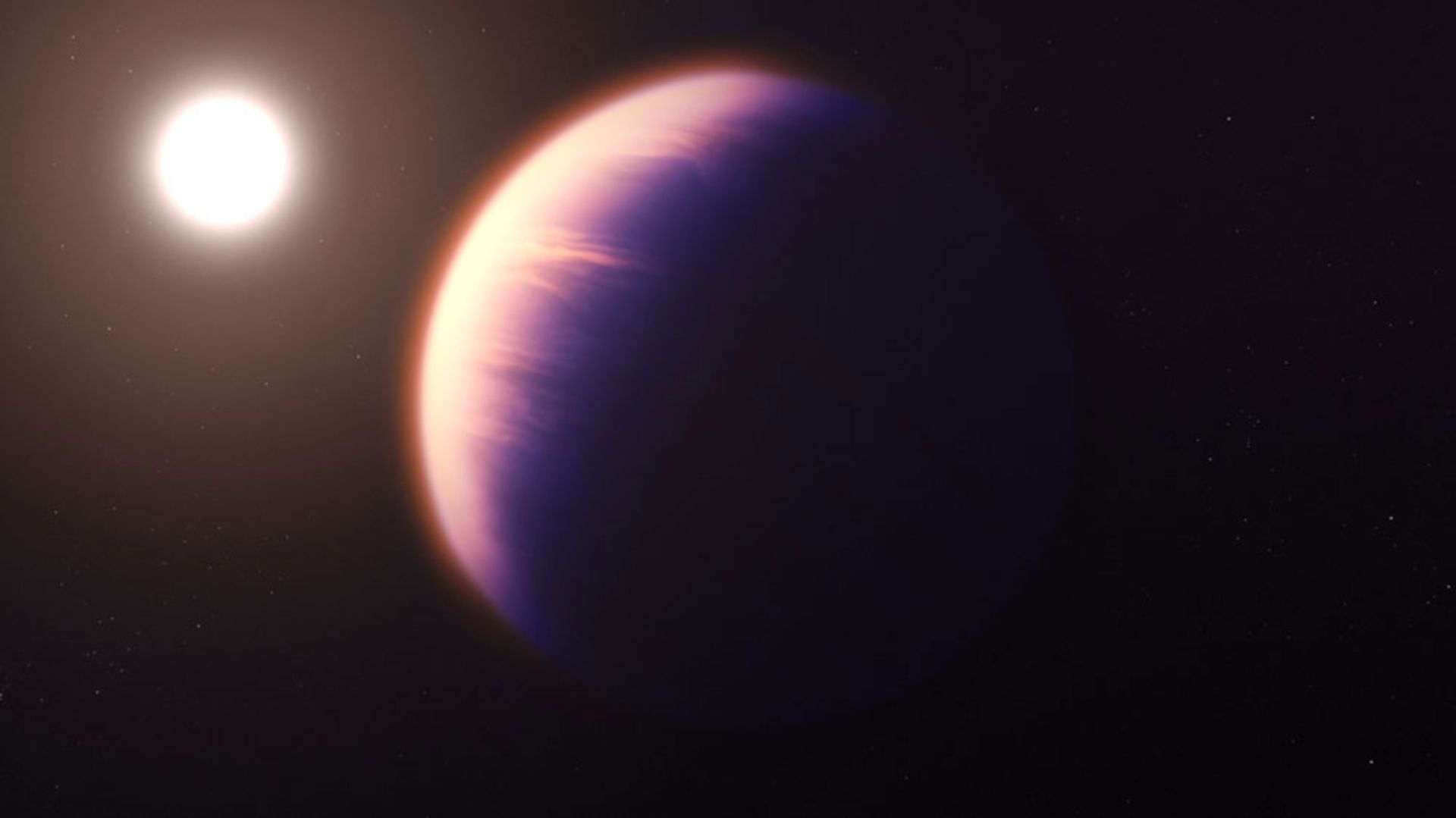 An artist’s rendering of the exoplanet WASP 39b
An artist’s rendering of the exoplanet WASP 39b
The James Webb Telescope’s Near-Infrared Spectroscopy (NIRSpec), closely observing the exoplanet WASP-39b, found clear evidence of carbon dioxide in its atmosphere. This is the first time that this familiar gas has been discovered on Earth in a planet outside the solar system. The spectrum of 3 to 5.5 microns, which is the infrared ratio of the transmission spectrum, is useful not only for detecting carbon dioxide but also for water and methane, which are all indicators of life.
WASP 39b, with a temperature of 870°C, is a hot Jupiter-type planet about 700 light-years from Earth. The mass of this planet is equal to a quarter of the mass of the planet Jupiter, but its diameter is 1.3 times larger than Jupiter. The planet also orbits a Sun-like star at such a high speed that it completes its orbit in just four days.
WASP 103b, the rugby ball planet
 A rendering of the planet wasp103b that resembles a rugby ball.
A rendering of the planet wasp103b that resembles a rugby ball.
WASP-103b, shaped like a rugby ball, is the first non-spherical exoplanet ever discovered. This planet, which completes its orbit around its star in less than a day, has strong gravitational forces that have turned it into a rugby ball.
The Cheops telescope of the European Space Agency discovered this strange planet in the constellation of Hercules. The planet WASP 103b, twice the size of Jupiter, is very close to its star.
51 Pegasi b; The first planet around a Sun-like star
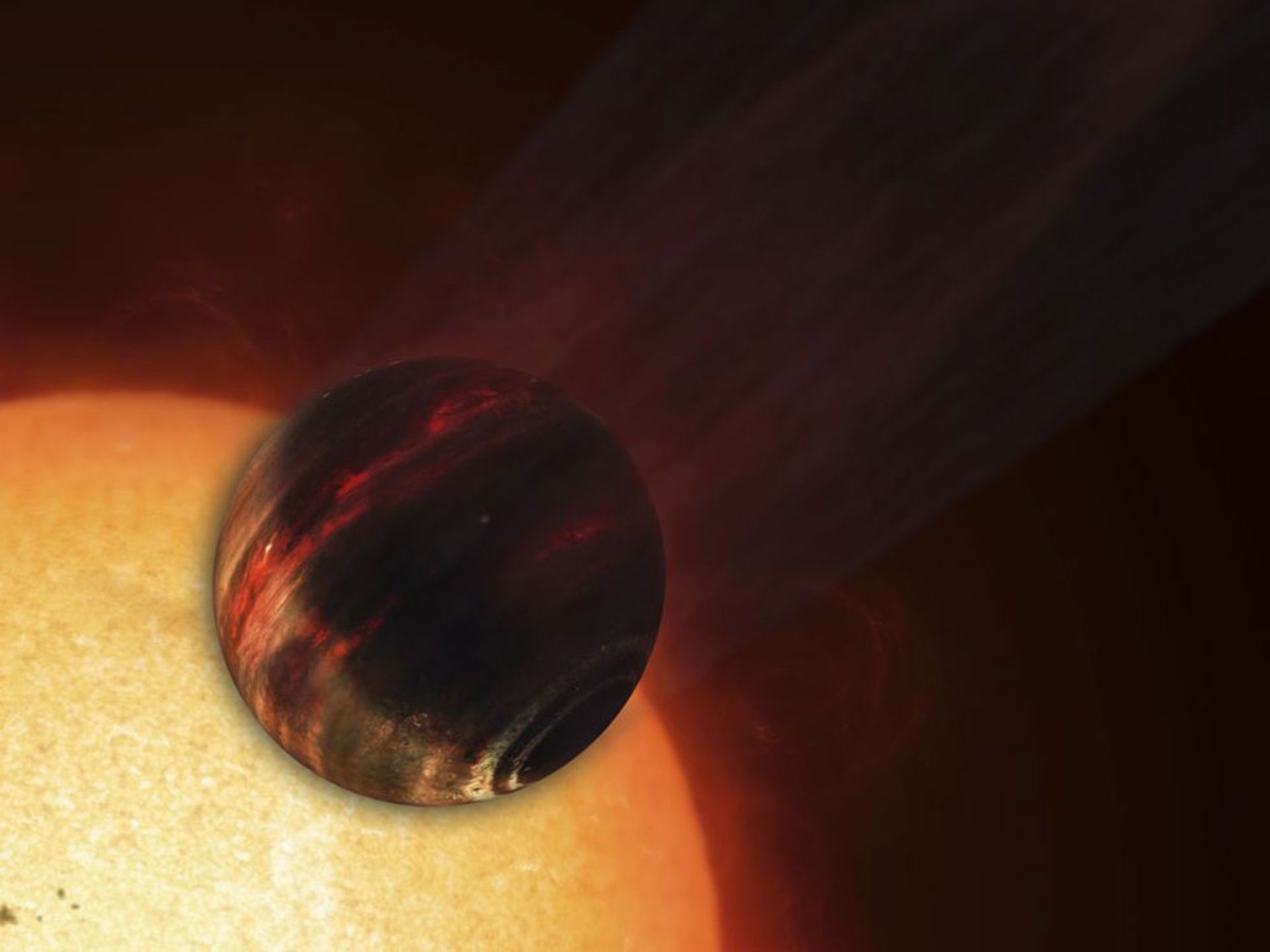 Illustration of the exoplanet Pegasi B 51
Illustration of the exoplanet Pegasi B 51
Although 51 Pegasi b is not the first exoplanet discovered, it can be considered the first example discovered around a Sun-like star. In addition, this planet has no resemblance to the planets we know. This huge world completes its star orbit in just a few days.
In 2015, the atmosphere of 51 Pegasi b was studied in the visible spectrum. As a result, researchers were able to find out the real mass or orbital orientation of this planet through its light.
PSR B1620-26b; The oldest known planet
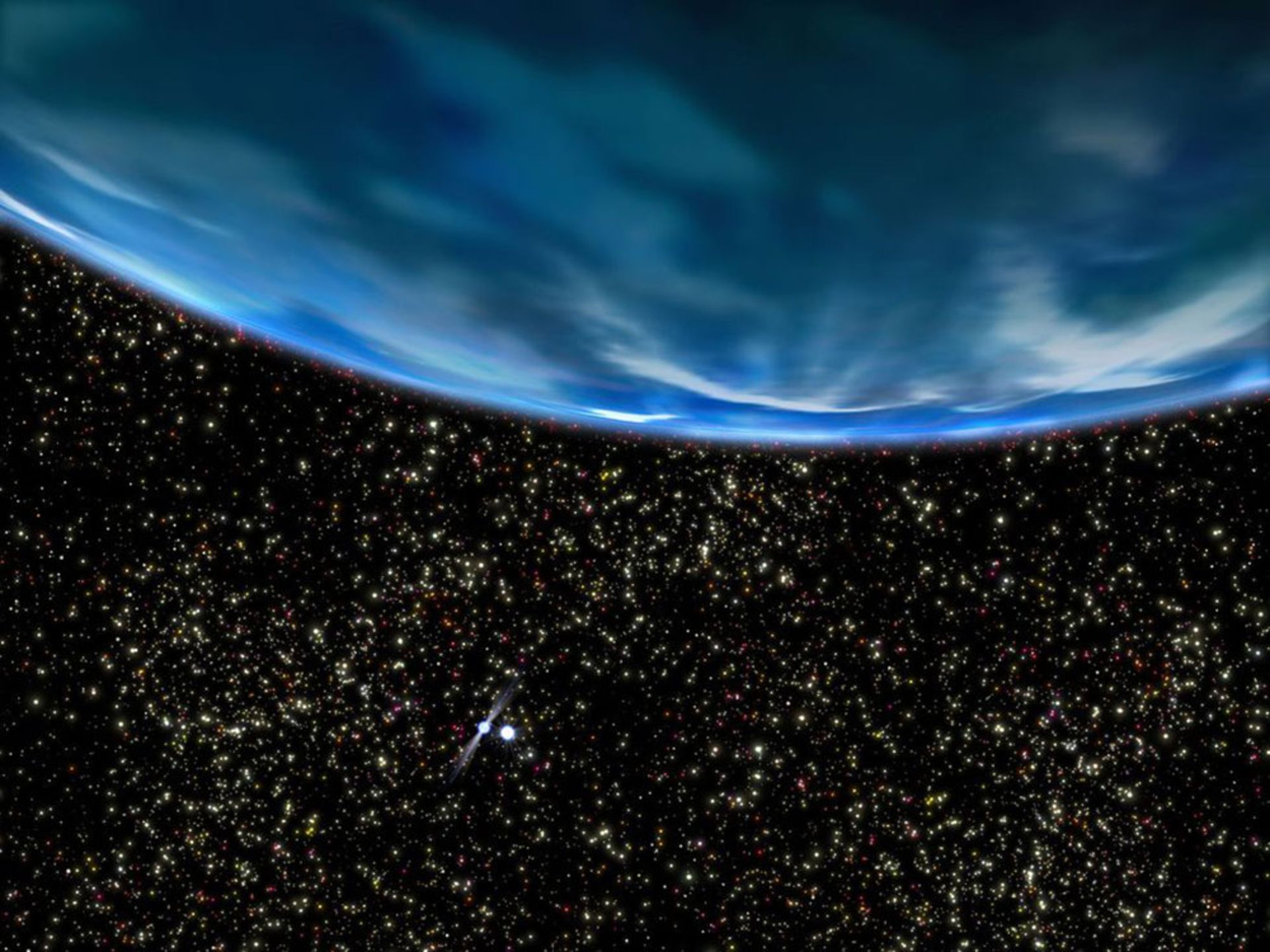 PSR B1620 is the oldest known exoplanet.
PSR B1620 is the oldest known exoplanet.
The name PSR B1620-26b may not be as easy to pronounce as many exoplanets. However, this planet, with an approximate age of 12.7 billion years, is the oldest planet ever discovered. This planet is only slightly younger than the age of the entire universe. This ancient planet orbits a pulsar as well as a superdense white dwarf at the same time. These two stars revolve around each other and the gas giant planet also revolves around their gravitational axis.
Gliese 876d; rocky planet
 Illustration of the rocky planet Gliese 876d
Illustration of the rocky planet Gliese 876d
The planet Gliese 876d is only 15 light-years away from Earth, and due to its small size, it belongs to the group of rocky planets. Of course, this planet is slightly bigger than our Earth. By all accounts, Gliese 876d is a hell of a world. This planet is very hot, yet since its discovery in 2005, it has been considered important evidence for the existence of rocky worlds outside the solar system.
Kepler-11f; gas dwarf
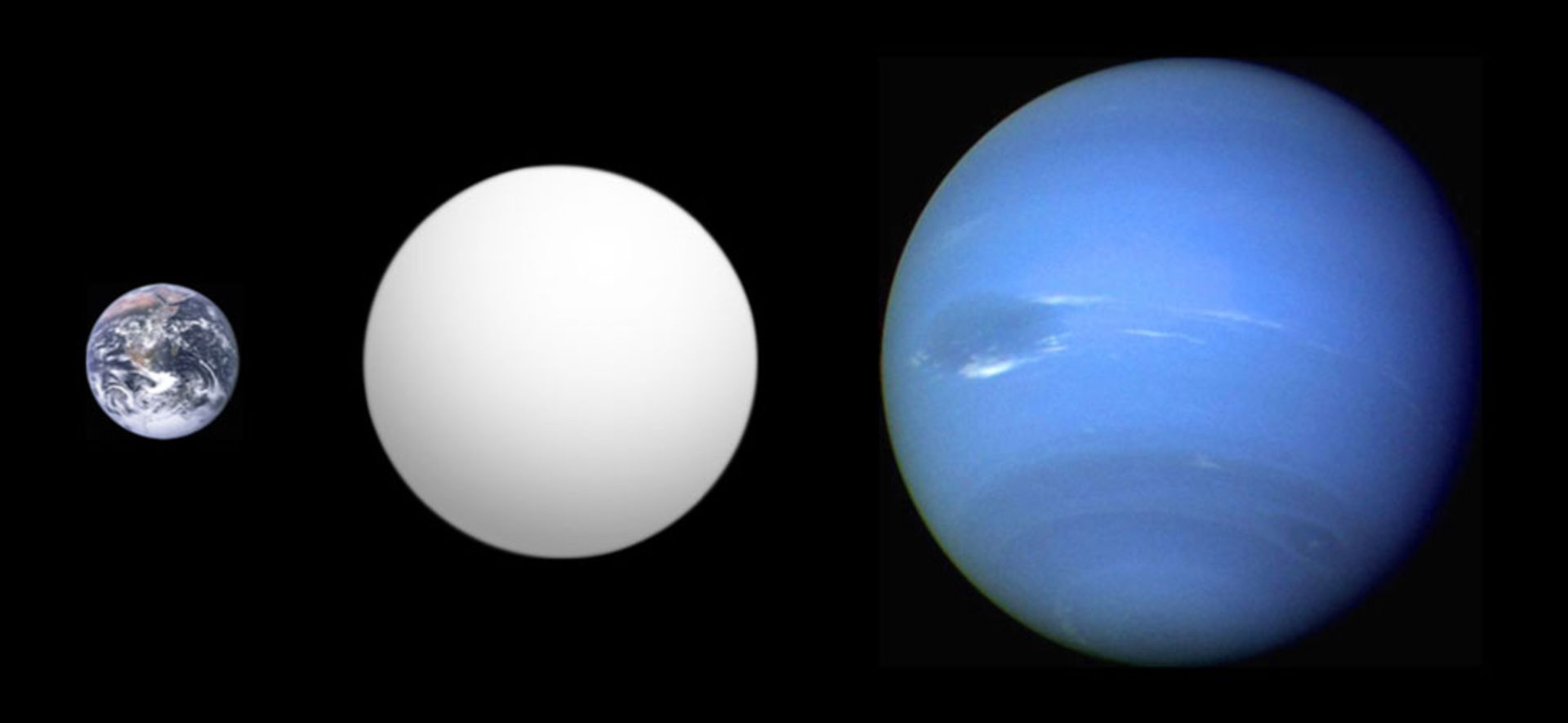 Some planets like Kepler 11f are mini-Neptunes.
Some planets like Kepler 11f are mini-Neptunes.
There is a problem with the classification of smaller exoplanets; So far, we have observed several planets in space that are larger than Earth but smaller than Neptune; But we don’t have such a group in the solar system. For this reason, it is difficult to guess that rocky planets like Mars and Earth can grow to what extent? Or exactly in what dimensions do they become gas giants like Uranus and Neptune?
Kepler 11f is a mini-Neptune planet. The density of this planet shows that it has an atmosphere similar to Saturn and a small rocky core. This planet led to the creation of a new category called gas dwarf, which does not exist in our solar system.
Kepler-452b; Earth-like planet
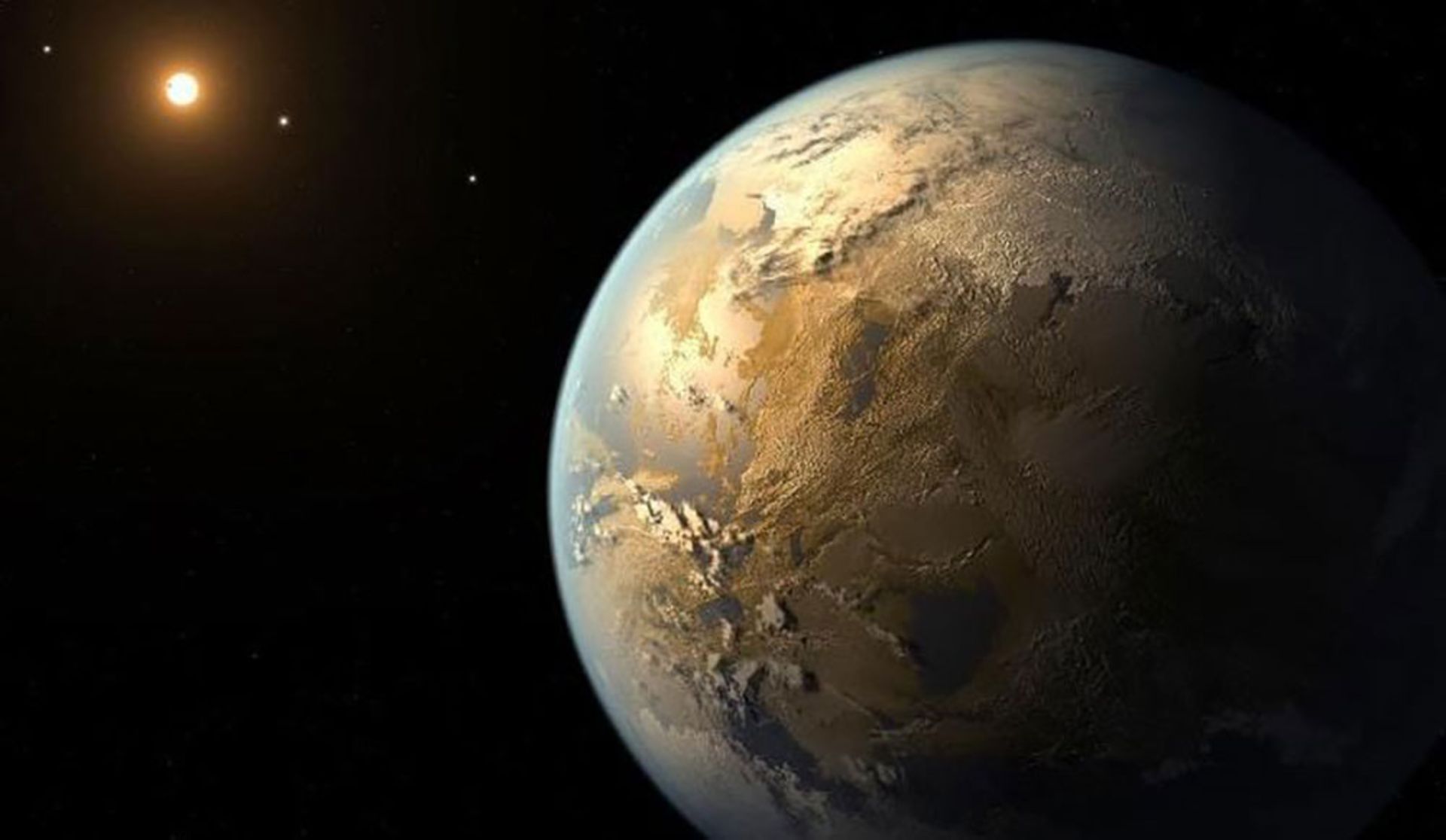 The Kepler 452b planet can be considered the most Earth-like planet.
The Kepler 452b planet can be considered the most Earth-like planet.
Kepler 452-b can be considered the most Earth-like planet ever discovered. The star of this planet is the same size as the sun and its year is slightly longer than the Earth’s year. Of course, this planet is slightly larger than Earth, but it is definitely located in the life belt of its star.
However, there are a few problems with Kepler 452b: First, the planet is more than 1,000 light-years away from Earth, so we’ll never reach it. It is also 1.5 billion years older than Earth, so it can be said that its host star has grown so much that it has made the planet uninhabitable. So maybe it was Earth’s twin many years ago.
Search for life in extrasolar planets
One of the biggest questions of mankind is whether there is life outside the earth. The James Webb Space Telescope, launched in 2021, has found evidence of the essential ingredients for extraterrestrial life: a mixture of gases in the atmospheres of Earth-like exoplanets. This telescope was able to discover atmospheric signs similar to Earth, such as oxygen, carbon dioxide, and methane, which are strong indicators of possible life.
Probably, future telescopes will be able to detect the signs of photosynthesis, which is the conversion of sunlight into chemical energy necessary for plants. Or maybe they can detect gases and molecules from animal life. Also, extraterrestrial intelligent life probably creates atmospheric pollution that can be detected from a distance.
 In the area of the life belt, it is possible for liquid water to flow on the surface of the planet.
In the area of the life belt, it is possible for liquid water to flow on the surface of the planet.
So far, more than 5,000 exoplanets have been discovered, but their total number can reach trillions. One of the best tools for scientists to increase the accuracy of searches is the area known as the life belt. As we said in the previous section, the life belt is a distance from the orbit of a star whose temperature is suitable for the flow of surface liquid water.
Many other conditions are necessary for the formation of life on exoplanets: first of all, the size of the planet and the right atmosphere are important. Also, the host star must be stable and not emit deadly flares. Lifebelt is just one way to narrow down searches. So far, many Earth-like planets have been discovered, however, more advanced tools are needed to increase the accuracy of searches.
Interesting facts about exoplanets
In the era of innovation, we are getting closer to the outside world every day. Searching for extrasolar planets has been one of the latest human space adventures. In this section, we discuss interesting facts and points about these mysterious objects.
Detecting the color of an exoplanet for the first time in 2013
The study and discovery of extrasolar planets began in the ’90s, But it was in 2013 that researchers were able to identify the color of an exoplanet for the first time. Based on a measure called reflectivity, astronomers obtained a dark blue color for the planet HD 189733b. It was from this point that the colors of other exoplanets were obtained. For example, the color of the planet GJ 504b is purple. According to astronomers, helium planets are mostly white or gray.
There are 10 billion Earth-like planets in the Milky Way
According to estimates, the number of Earth-like planets in the Milky Way alone reaches ten billion. Kepler 22b was discovered in 2011 as the first exoplanet in the habitable belt. When the news of this discovery spread, people immediately fantasized about life on such a planet. However, the distance of 587 light years from Earth means that we have to spend thousands of years to reach this exoplanet. This planet is currently under investigation.
 There are 10 billion Earth-like planets in the Milky Way
There are 10 billion Earth-like planets in the Milky Way
NASA’s Kepler space telescope has discovered the most exoplanets
NASA’s Kepler Space Telescope, which was launched for the first time in 2009, was dedicated to the search for exoplanets. Initially, the Kepler mission was supposed to last only 3.5 years, however, this spacecraft continued its investigations until 2018. This telescope definitively discovered more than 2,600 exoplanets.
The possibility of exoplanets around stars with high metallicity
Most of the physical materials in the world are composed of hydrogen and helium. Metallicity is the term astronomers use to describe elements other than helium and hydrogen. According to data collected by the Kepler telescope, stars with more diverse elements are more likely to host exoplanets in their orbits.
Using the gravitational microlensing method to observe exoplanets
In the gravitational microlensing method, a star other than the exoplanet host is used. When a star passes in front of another star, its gravity acts like a lens that magnifies the light of the other star. If the lensed star has a planet in its orbit, the exoplanet’s mass increases the magnification effect. Astronomers used this method to search for more than 20 exoplanets.
Most exoplanets were discovered through radial velocity
The general rule for identifying exoplanets is to observe the motion of their star. This method, which is also called Doppler oscillation, has been the most successful method for discovering exoplanets, so far 400 planets have been discovered this way. The radial velocity of the star changes due to the gravitational pull from the planet around it. In this case, the star seems to be sliding.
The transit method is the easiest way to find exoplanets
The transit method, which from our point of view is the burning of a star, is one of the common methods for discovering exoplanets. Using this method, astronomers can estimate the orbits and mass of exoplanets from Earth through their flickering frequency.
Exoplanets can orbit more than one star
Unlike the Solar System, where planets orbit a single star, some planetary systems can have more than one star. These double or triple systems provide unique contexts with multiple radiation sources.
Exoplanets can have harsh climates
Some exoplanets show strange weather phenomena. Hot Jupiters, for example, can reach scorching temperatures and violent storms.
Some exoplanets have strange orbits
Not all exoplanets follow an elliptical or circular pattern of orbital motion. Some planets have eccentric, elongated orbits, taking an adventurous journey around the axis of their star. Exoplanets can have unique atmospheres
By analyzing the light passing through the atmosphere of exoplanets, scientists can gain interesting insights about the composition of these planets. The atmosphere of some extrasolar planets has elements such as iron vapor, carbon dioxide, and even methane.
Conclusion
An exoplanet is a planet outside the solar system that is classified into different groups and types. The first group are rocky planets similar to Earth or larger than Earth, which are also called super-Earths. Super-Earths can eventually become gas planets known as mini-Neptunes. The next group is the gas planets, which are divided into gas giants, ice giants, and hot Jupiters.
So far, more than 5000 exoplanets have been discovered and confirmed, and this number is increasing day by day. According to estimates, there are only 10 billion Earth-like planets in the Milky Way. Earth-like planets are usually located in the life belts of their stars. In the zone of the life belt, the temperature of the planet is so suitable that it is possible for surface liquid water to flow on it, and this feature can increase the potential for life. Researchers hope to get more data from exoplanets by building more advanced telescopes because understanding exoplanets will help us to better understand our planet and the world around us.


Seven surprising discoveries about the planet Mercury
Mercury, which is very close to the Sun, seems to be a dead planet. Scientists used to think that it was just a lump of rock close to the Sun and a hostile world: the day and night side of the planet witnessed a temperature difference of nearly 600 degrees Celsius.
But now it has been proven that Mercury is a world of contradictions and a dynamic planet that hides unexpected surprises. A thin atmosphere, a magnetic field, and a reservoir of volatile compounds still exist on this planet, and scientists often associate these features with planets that are larger and farther from the Sun.
“We expected Mercury to be a hot, baked object,” says Deborah Domingo, a senior scientist at the Institute for Planetary Sciences. He says the observations of the last few decades have changed the scientists’ belief about this planet. Evidence shows that Mercury is not just a dry mass of rock. One of the wonders of this planet is that it still has bubbles of ice.
So far, only two missions have reached Mercury. The third mission is Bepi Colombo (a joint mission of the European Space Agency and Japan Aerospace Exploration Agency), which is on its way and will reach its destination in late 2025.
While the few ground-based observations and space missions have not yielded much knowledge, they have helped clear up many early misunderstandings about Mercury’s mysteries. In the following, we mention some of the most amazing discoveries that have been made about Mercury.
Mercury has a metallic core

Mercury may be small, but it is heavy. Although the diameter of Mercury is not much larger than the diameter of the Moon, its mass is more than four times that of the Moon. After Earth, Mercury is the densest planet in the solar system. The planet’s high density comes from the fact that it has a large iron core that makes up about 60% of the planet’s mass. In contrast, the Earth’s core contains only about 15% of the planet by volume.
Read more: Why there is no gaseous moon in the solar system?
Turbulence inside Mercury creates a magnetic field
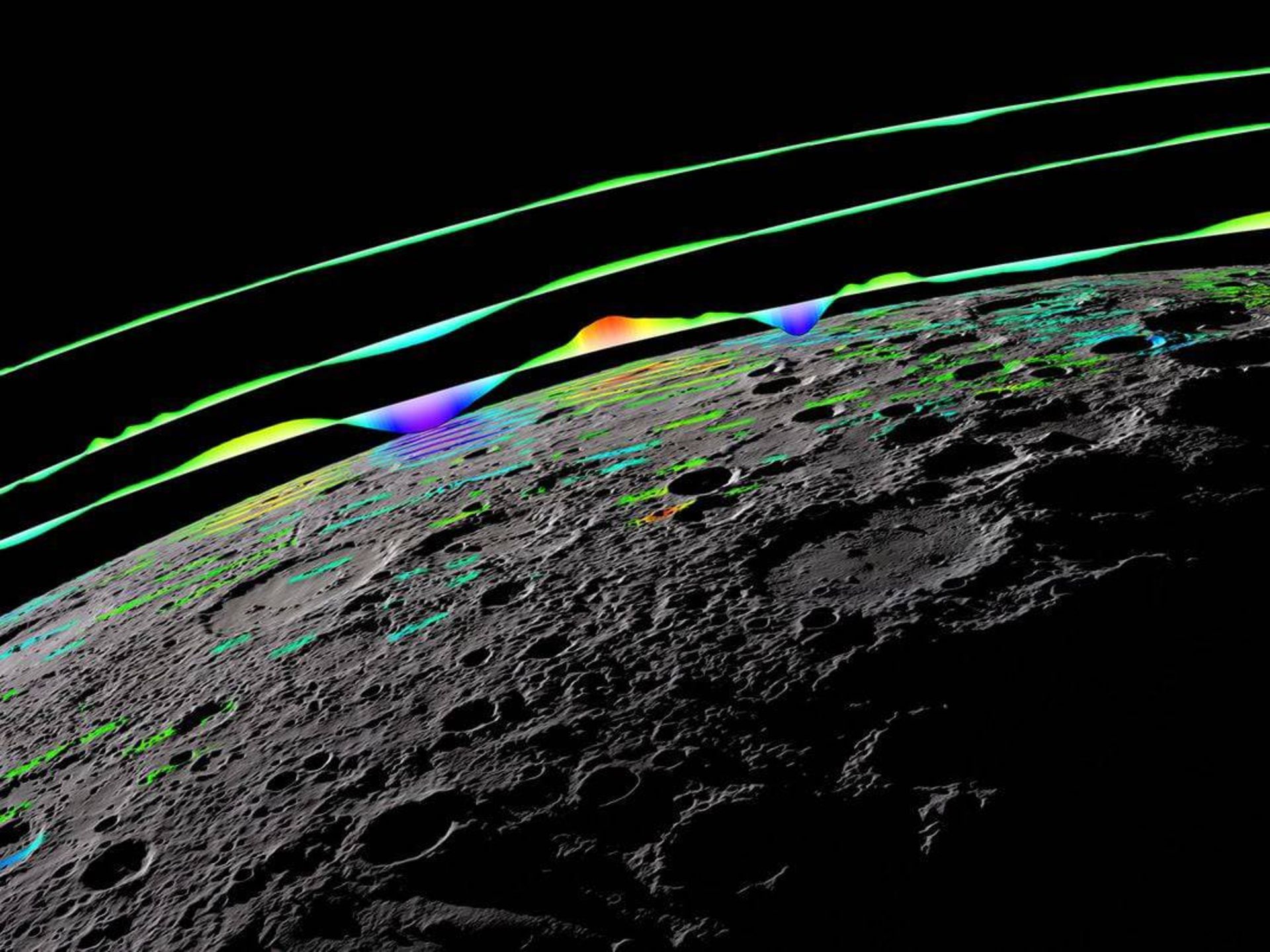 Small magnetic field signals from the surface of Mercury are evidence of a global magnetic field in its early history that is still present.
Small magnetic field signals from the surface of Mercury are evidence of a global magnetic field in its early history that is still present.
The first mission to Mercury, Mariner 10, was carried out in 1973 and showed that the planet has a magnetic field. This discovery came as a surprise to the scientific community, who had assumed that such a small planet would quickly cool and harden and lack a magnetic field. The presence of the magnetosphere indicates that part of Mercury’s core is still churning.
Mercury’s magnetic field is almost 100 times weaker than Earth’s magnetic field. The weak magnetic activity means that the planet is at the end of its evolution to become a dead planet like Mars.
In the 2010s, the second Mercury mission showed that the planet’s magnetic field was unbalanced. The magnetic south pole is not located on the geographic south pole but is buried about a fifth of the way inside the planet.
Antonio Genova, an aerospace engineer who studies geodesy and geophysics at Rome’s Sapienza University, says the magnetic field offers insights into the planet’s interior and its history, showing how its internal rotation has slowed over billions of years.
Mercury has a thin atmosphere
 The bright trail of Mercury
The bright trail of Mercury
Mercury has a thin atmosphere that cannot be considered a real atmosphere. Instead, scientists call this thin layer of gas the exosphere, where the gas is so thin that nothing like atmospheric pressure can be measured.
Astronomers in the 1980s detected atomic sodium, potassium, and calcium in Mercury’s exosphere, metals with strong emission signals visible from Earth with telescopes. These metallic elements are not usually considered as gases, but they make their way into the planet’s sky as a result of the impact of solar particles and meteorites on the surface of the planet.
Solar winds penetrate the resulting exosphere, and the interaction between gases and particles ejected from the Sun creates a 24 million km long glowing trail behind Mercury. The trail seasonally shortens and lengthens depending on the proximity of Mercury to the Sun. If you stand on Mercury and look up at the right time of year, Mercury’s long trail will appear as an orange glow in the sky.
There is ice at the poles of Mercury
 Mercury seems to have ice at its poles that is protected from solar radiation.
Mercury seems to have ice at its poles that is protected from solar radiation.
A planet so close to the Sun shouldn’t have water or ice, or so researchers thought. But in the 1990s, scientists at Goldstone in California and the Arecibo Radio Telescope in Puerto Rico directed a stream of radar signals toward Mercury. They were amazed to see two bright reflective spots at the poles, which were probably ice deposits.
In 2012, the MESSENGER spacecraft confirmed that the ice in the north pole of Mercury is frozen water. Surface laser measurements identified carbon-rich material on the surface that insulates the underlying ice.
Mercury has been able to retain its water because ice-containing bubbles lie beneath its permanent shadows. This planet rotates completely vertically in relation to its orbit around the sun; This means that impact craters near the poles have interiors that never see the light of day. The temperature inside these gaps is minus 170 degrees Celsius, which is close to the temperature at which nitrogen gas liquefies. “It’s cold enough there for the ice to be stable over geological timescales,” says Sean Solomon, a former planetary scientist at Columbia University and principal investigator of the MESSENGER mission.
Like many other rocky planets, the water on Mercury probably came from asteroids that landed on land. This water is hidden inside the craters of Mercury, which has not changed since the early times.
On other terrestrial planets in the solar system, geological processes such as climate circulation have spread the ejected water across the planet. Mercury’s poles are probably the best source if scientists want to sample intact ancient ice in the solar system, Solomon says.
Mercury contains various volatile substances
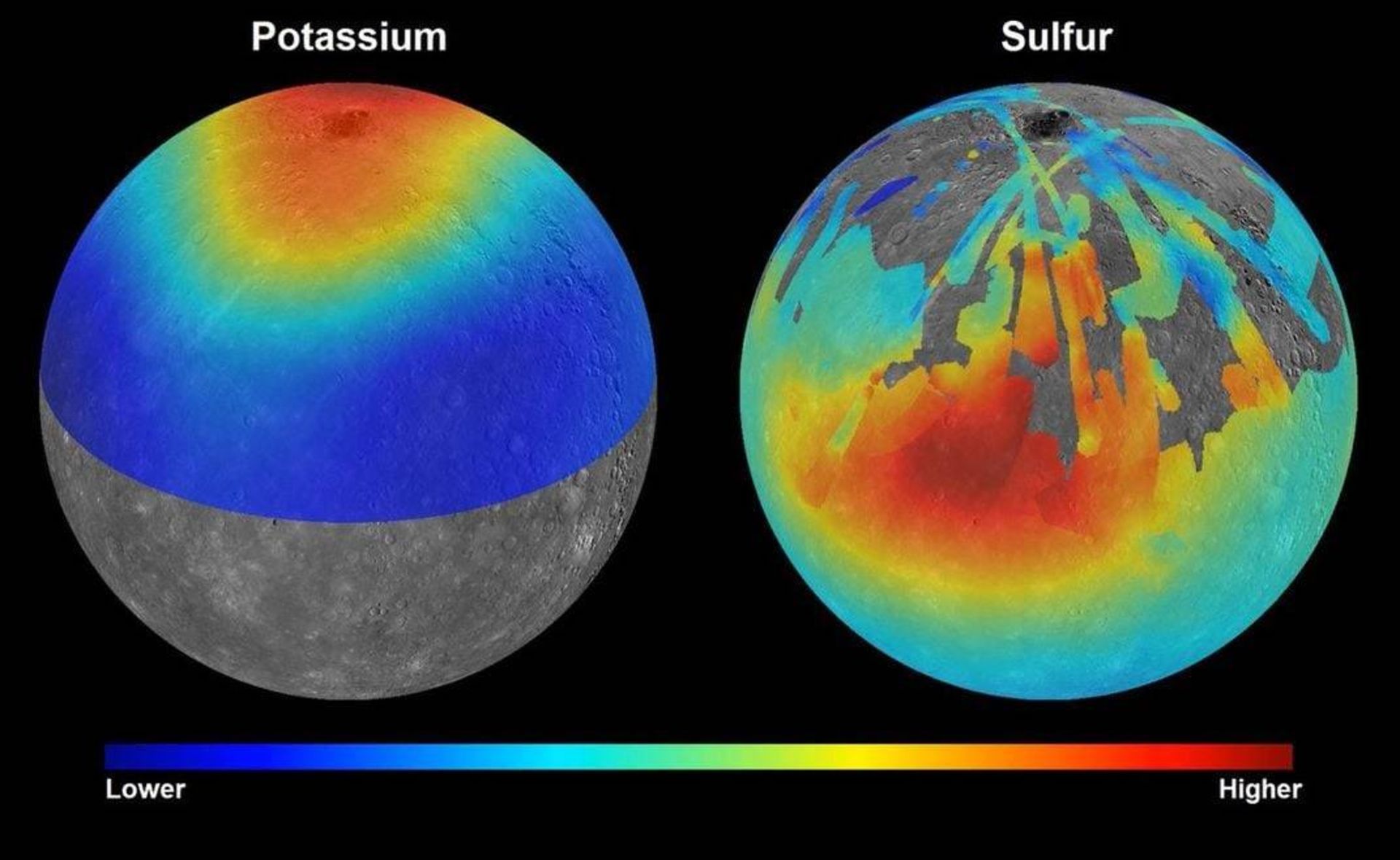 Mercury’s crust is rich in relatively volatile elements such as potassium and sulfur.
Mercury’s crust is rich in relatively volatile elements such as potassium and sulfur.
Mercury again challenged scientists’ expectations when the MESSENGER spacecraft detected volatiles in the burning world of Mercury. Volatile substances are chemicals that can change state between solid and gas phases in a short temperature change.
Mercury has already been proven to contain water, but the MESSENGER mission identified other elements such as sulfur, potassium, and chlorine that evaporate easily at relatively high temperatures. These volatile substances are spread all over the surface of the planet.
Due to its size, Mercury has higher amounts of volatiles than other Earth-like planets in the solar system, which are farther from the Sun and therefore much colder. Where the volatiles come from and how Mercury has preserved them is still a matter of debate among scientists.
Some researchers think the volatiles came from beneath the surface in recent history, while others think chemicals from Mercury’s embryonic days remained on its surface.
The presence of volatiles on Mercury raises questions. For example, if the planets that are close to their stars have volatile materials, especially water, could these regions be habitable? According to Domingo, Mercury shows that planets close to the Sun should not be ignored.
Mercury has irregular depressions on its surface. Mariner 10 first revealed them in 1975. Messenger then recorded high-resolution images of these areas. The depressions range from a few meters to more than 1.6 kilometers in width, and their depth reaches 36 meters.
Scientists believe that the holes may have been created by the escape of volatile substances. Since an atmosphereless Mercury has no wind or rain to batter the Earth, surface features such as craters can form as a result of other processes, such as the leakage of volatiles from land into space.
Craters are relatively young formations, averaging about 100,000 years old compared to the four-billion-year-old impact craters on Mercury. Scientists think the holes are still forming. These holes have only been seen on Mercury. It seems that other objects in the solar system do not have such effects.
In recent years, scientists have also identified other structures on Mercury: irregular ridges that cover a large portion of its surface. Some researchers believe that these uneven terrains are caused by the turbulent flow of fugitives from the depths of the planet. Other scientists think the bumps were caused by the impact of an asteroid.
Mercury was once volcanically active
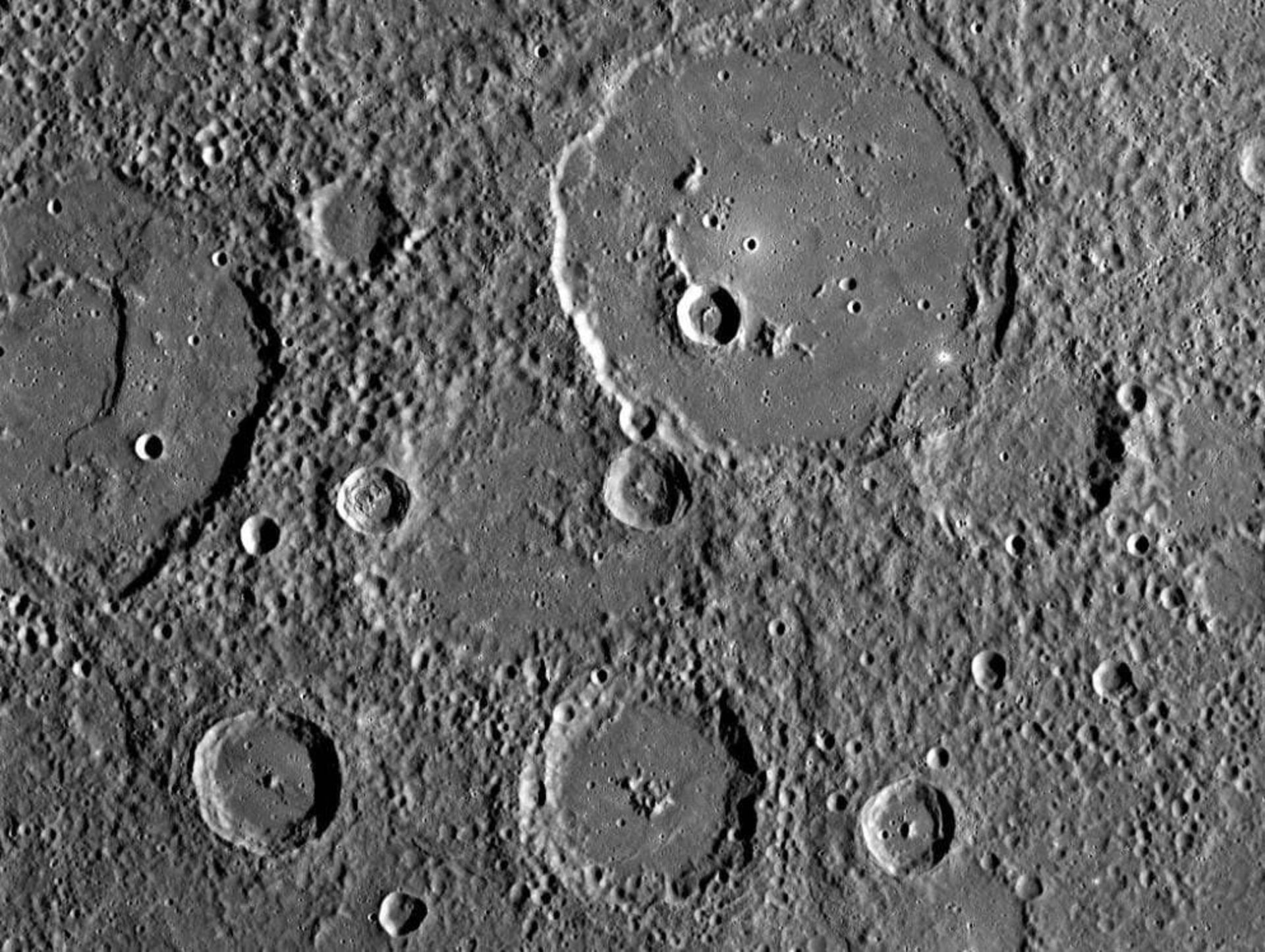 In this composite image taken by the MESSENGER spacecraft of the surface of Mercury, two large impact craters (top and left of the image) appear to have filled in and formed flat plains.
In this composite image taken by the MESSENGER spacecraft of the surface of Mercury, two large impact craters (top and left of the image) appear to have filled in and formed flat plains.
Mercury’s topography provides clues that volcanoes once spewed lava onto the planet’s surface. The MESSENGER spacecraft clearly showed the bright plains scattered across the surface of Mercury. Lava accumulated on older craters and ridges flattened to form plains. Researchers think that an active volcano on Mercury became dormant between 1 billion and 3.5 billion years ago as the planet cooled and contracted, blocking magma escape routes.
Mercury also shows signs of explosive volcanic activity. Irregular pits several kilometers long and more than three kilometers deep point to ancient pyroclastic volcanoes that have destroyed themselves. Around the pits, there are sediments that, according to researchers, were released as a result of volcanic explosions. These types of volcanic explosions are probably caused by volatile substances underground. When these buried chemicals come to the surface, their volume increases. Finally, the increase in gas pressure causes the volcano to explode.
BPI Colombo scientists hope to learn more about where the volatiles on Mercury come from. Mapping volatiles on the planet’s surface provides clues about how they got there. The origin of volatile substances is one of the main topics of space exploration.


The highest observatory in the world officially started its work


Many mental disorders have physical roots


How to connect to the TV with a Samsung phone?


What is an exoplanet? Everything you need to know


Seven surprising discoveries about the planet Mercury


The secret of the cleanest air on earth has been discovered


Asus Zenbook 14 OLED laptop review


Motorola Edge 50 Pro


How extinct animals could be brought back from death?


Healing diabetic wounds with bacteria-killing hydrogel
Popular
-



 Technology9 months ago
Technology9 months agoWho has checked our Whatsapp profile viewed my Whatsapp August 2023
-



 Technology10 months ago
Technology10 months agoHow to use ChatGPT on Android and iOS
-



 Technology9 months ago
Technology9 months agoSecond WhatsApp , how to install and download dual WhatsApp August 2023
-



 Technology11 months ago
Technology11 months agoThe best Android tablets 2023, buying guide
-



 Humans1 year ago
Humans1 year agoCell Rover analyzes the inside of cells without destroying them
-



 AI1 year ago
AI1 year agoUber replaces human drivers with robots
-



 Technology10 months ago
Technology10 months agoThe best photography cameras 2023, buying guide and price
-



 Technology11 months ago
Technology11 months agoHow to prevent automatic download of applications on Samsung phones
